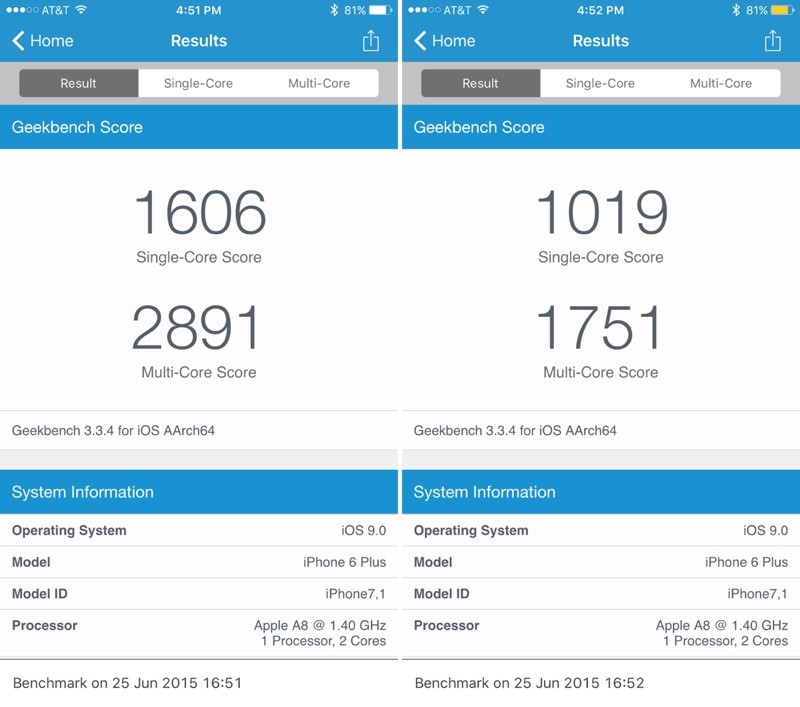With the debut of the first beta of IOS 9, Apple introduced a new Low Power mode, which extends battery life in an iPhone when battery power runs low. The new mode accomplishes this by reducing the phone’s performance and reducing background activity.
MacRumors has tested an iPhone 6 Plus in the newly updated Geekbench 3 benchmarking app, which gives a better idea of how iOS 9 Low Power mode works.

Without Low Power mode activated, an iPhone 6 Plus scored 1606 on the single-core processor test and 2891 on the multi-core processor test. When Low Power mode was turned on, the same iPhone 6 Plus scored 1019 on the single-core test and 1751 on the multi-core test, suggesting there’s a significant performance reduction when Low Power mode is enabled to save as much battery as possible.
Benchmark results performed on an iPhone 5s proved to be similar, with its performance reduced by around 40%. The benchmarking app showed single/multi-core scores of 1386/2511 without Low Power mode and scores of 816/1405 with Low Power mode turned on.
Low Power mode automatically activates when an iPhone drops to 10%-20% battery level, alerting users with a notification allowing them to quickly activate the mode. Users can activate the mode manually in Settings. The mode slows the CPU, disables Mail Fetching, Background App Refresh, motion effects, and animated wallpapers. Low Power mode is indicated by a yellow battery icon.
In addition to Low Power mode, iOS 9 includes other performance optimizations that can extend an iPhone’s battery life by approximately an hour under normal use.
iOS 9 is current in its second beta release, and is only available to registered developers. A public beta is due to occur in July, and a wide public release of the mobile operating system is expected in the fall.

